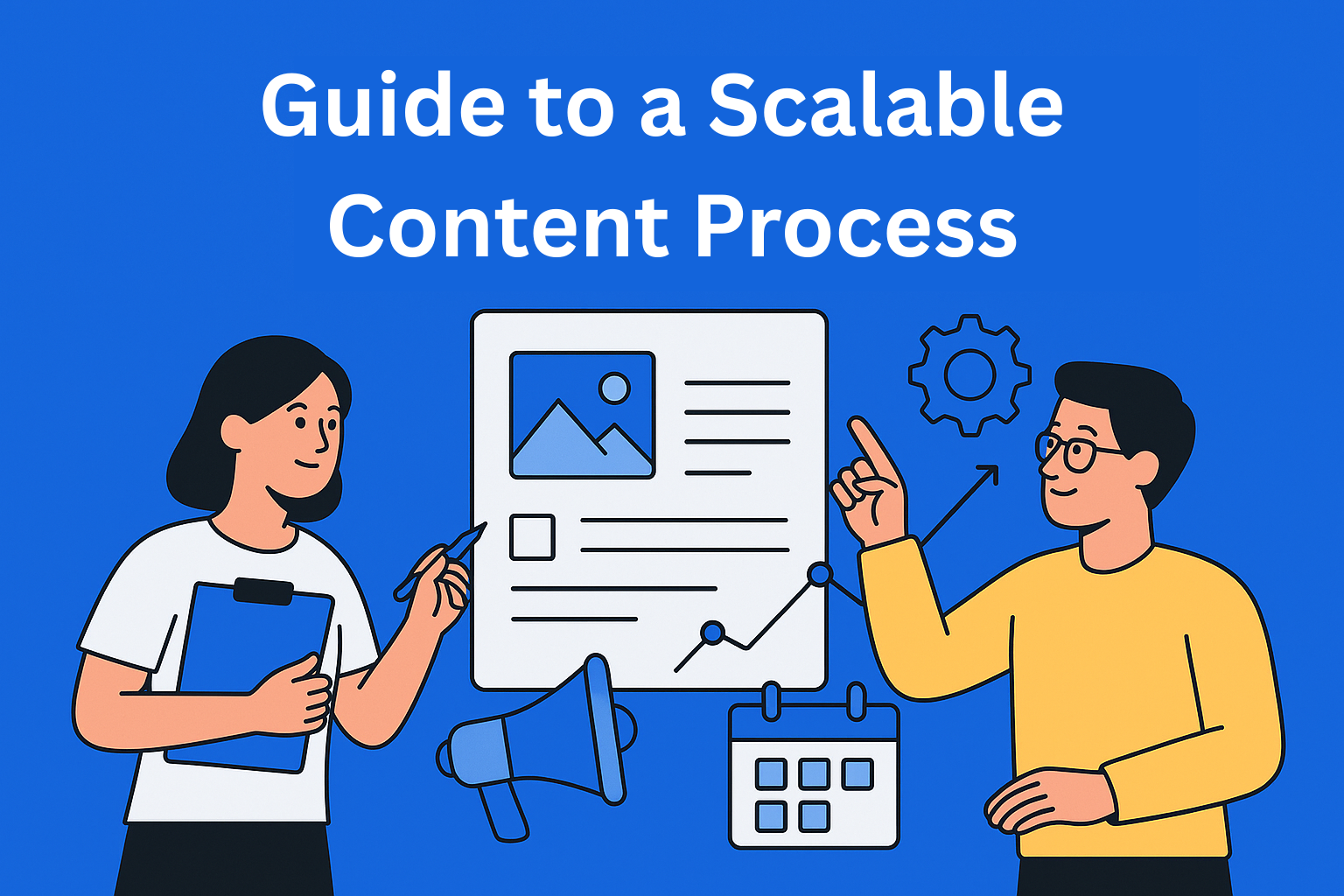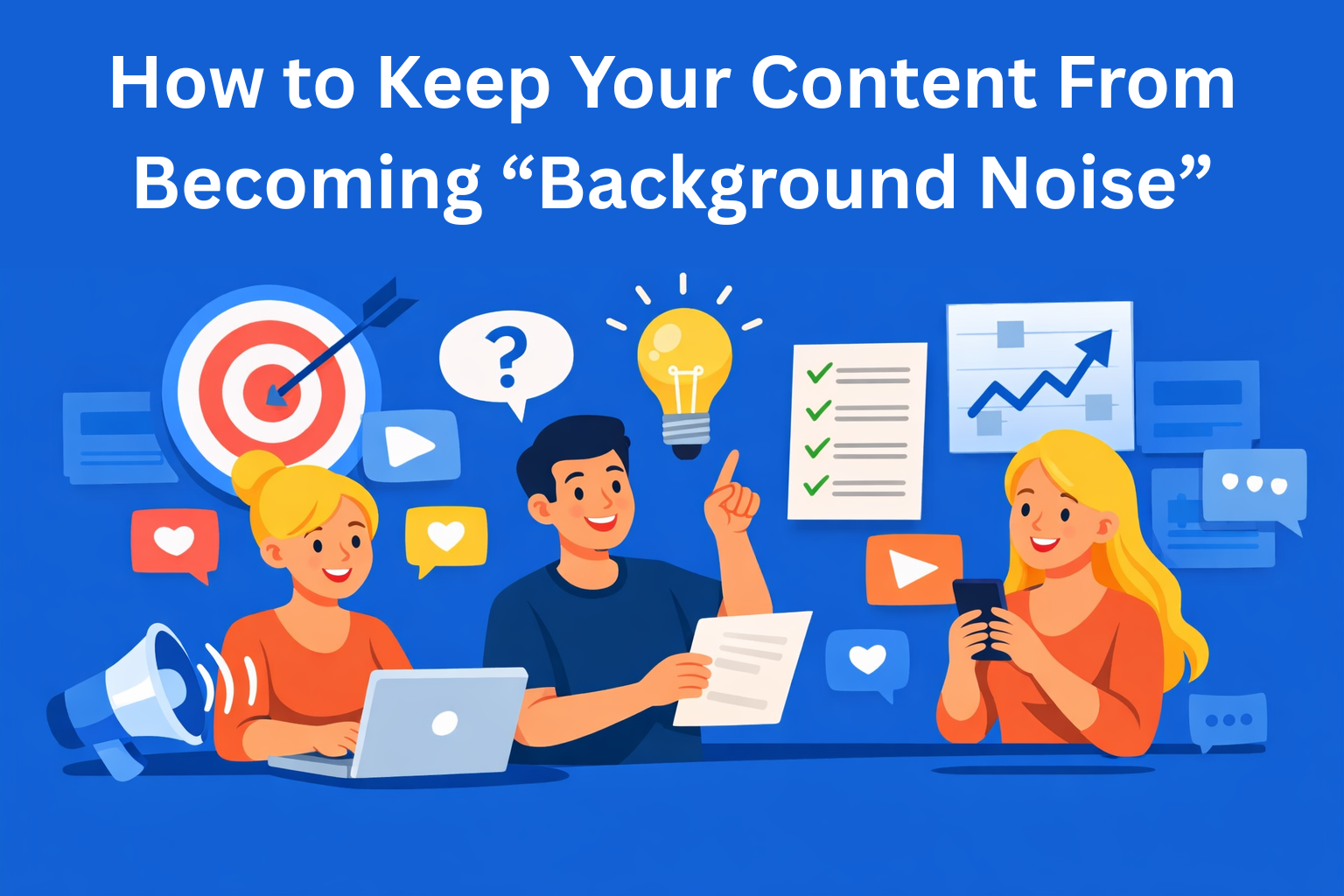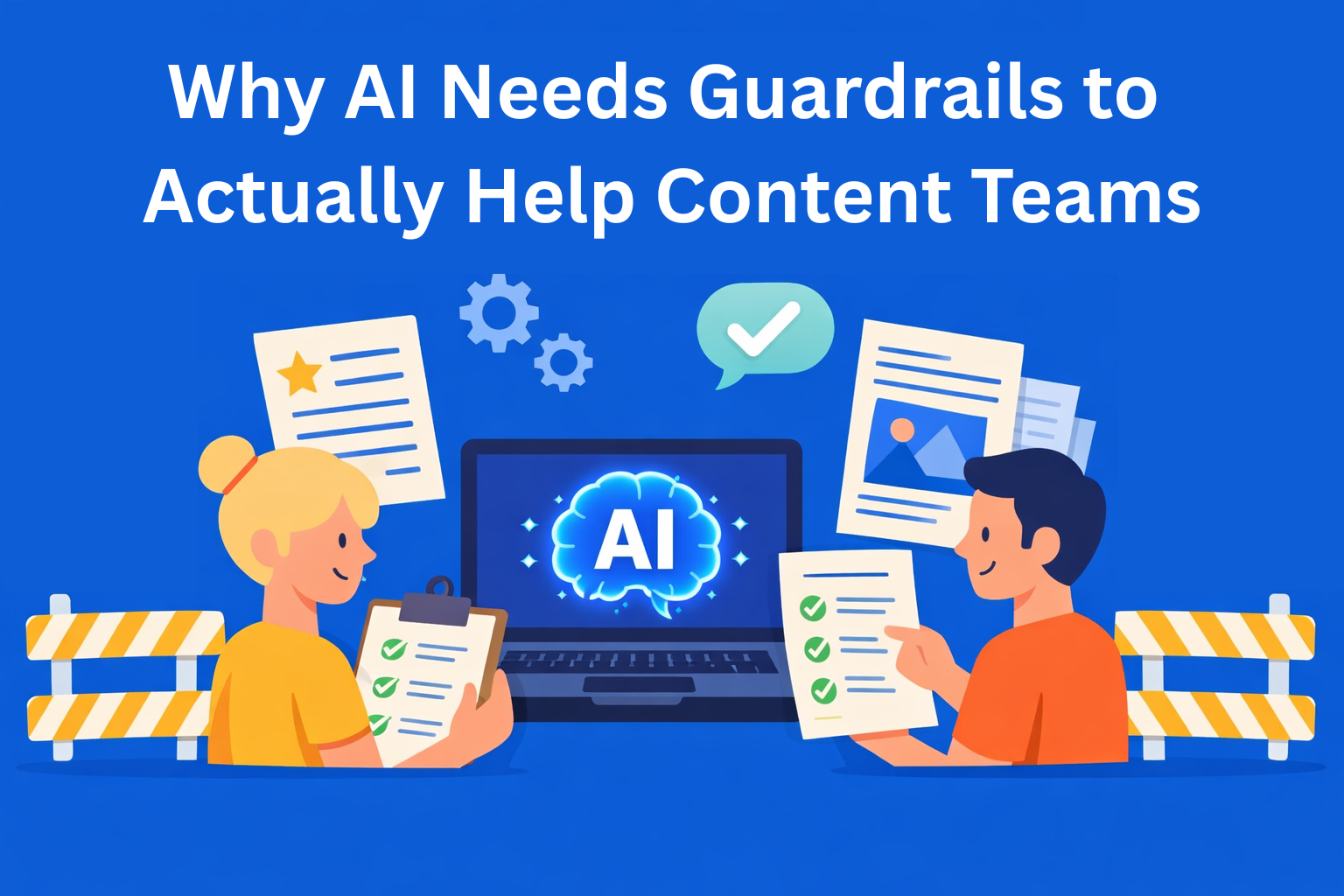A Beginner’s Guide to Building a Content Process That Scales
Learn how to build a simple content process from scratch, from planning and creation to distribution and scaling. Perfect for beginners who want consistent content without the chaos.

Blogs, newsletters, videos - all of these are types of content we see every day. But if you're creating any of these and just writing or publishing randomly when you have time, you'll quickly lose your rhythm and motivation. That’s why a content process is important. It’s a system that helps you create content regularly and in a way that can be repeated.
When you have a process, everything becomes easier:
- You know what comes next.
- Where to invest your time.
- How to measure results.
Through this blog, you’ll learn step by step how to create a content process that can grow together with you and your goals.
Key Takeaways
- Start with clear goals and audience understanding - define why you’re creating content, who it’s for, and where it should be shared.
- Plan ahead with a content calendar - consistent output comes from good planning, not last-minute inspiration.
- Keep your creation process simple and repeatable - outline, draft, edit, publish. Then do it again.
- Repurpose and promote smartly - one blog post can turn into 4–5 different formats. Maximize the value of each piece.
- Measure, improve, and scale - track what works, optimize, and document the process so others can join and help you grow.
1. Laying the Foundation
The first step in building a process is knowing why you’re even creating content.
- Maybe you want more people on your site.
- To build trust.
- To show your expertise.
When you define your goals, it becomes much easier to know the direction of your content. For example, do you want more people to hear about you, to help them learn something, or to turn them into clients?
Then, it’s important to know who your audience is. This means thinking: who are the people you want to reach? Are they young entrepreneurs, parents looking for advice, or maybe small business owners? When you know who you’re talking to, you’ll also know what tone to use and what topics to cover.
Finally, choose channels through which you’ll share your content. If you like writing, a blog might be a great choice. If it’s easier for you to record video, then Instagram or TikTok may be better. There’s no need to use everything at once. Start with one or two channels that suit you best and that you can use regularly without burning out. But channel choice shouldn’t be based only on what suits you, it also depends on your audience. Because if your target group is people interested in B2B SaaS companies, TikTok Reels won’t be as effective as, for example, a carousel post on LinkedIn.
2. Ideation and Content Planning
The most common problem is: “What should I write about?”
You can find inspiration through SEO research, questions people ask, comments on social media, or even from conversations with customers. Once you have a list of ideas, the next step is a content calendar. This is a simple plan for when you’ll publish which content. You can manage it in Google Sheets, Notion, or tools like EasyContent. A calendar helps you stay consistent and know what’s coming up in advance.
It’s important to set priorities - you can’t write about everything at once, so start with what’s most useful to your audience.
3. Creating Content
Now comes the fun part - writing and creating.
First, decide which format suits you. If you’re just starting, it’s best to pick one format and be consistent.
The process can look like this:
- Decide on an idea
- Build it out
- Then review and edit it
Don’t expect your first attempt to be perfect - what matters most is maintaining a rhythm. Tools can help, from AI assistants to content management software. Here, the common dilemma appears: quantity vs. quality. The best answer is balance - it’s better to publish one quality post a week than five mediocre ones.
4. Review and Editing
No content should go online immediately without review.
The review loop is the part of the process where someone (or even you, after a short break) checks the content. This includes grammar, clarity of the message, and whether the content aligns with your goals. If you work in a team, divide responsibilities: the writer writes, the editor polishes the tone, and the expert checks accuracy. If you use EasyContent, you can easily assign and manage roles for each team member, as well as set permissions for each role. This way, you ensure everyone does exactly what they’re responsible for. This builds consistent quality.
Set standards - for example, every blog post must have an introduction, subheadings, and a call to action. Once you set the rules, everything becomes faster and easier.
5. Distribution and Promotion
Content that sits only on your website won’t have much effect. You need to share it.
Distribution means finding the channels where your audience spends time. These could be social media, email, LinkedIn groups, or forums. One piece of content can be used multiple times. A blog post can become a LinkedIn post, a newsletter, or a short video. This is called repurposing, and it helps you save time.
Automation is another trick: scheduling posts in advance allows you to maintain consistency without stress. Keep in mind that this requires specific tools, so if you don’t have the budget for them, you’ll have to do it manually.
6. Measuring and Optimization
To know if your content process is working, you need to measure results.
The most common metrics are:
- How many people read the post
- How many shared it
- Whether they signed up for a newsletter
- Or bought a product
Numbers show you what works and what doesn’t. If you see one topic getting a lot of views, create more like it. If a social media platform isn’t delivering results, it might not be worth investing time there. Measurement is the foundation for optimization - constantly adjusting the process to make it better. But don’t stress too much about numbers. If a post on Instagram gets 2 likes, no one signs up for the newsletter, and no one shares your blog post - don’t worry, that’s all part of content creation. It’s not realistic for every post to do well, and it’s normal to have ups and downs. Numbers should guide you, not control you.
7. Scaling the Process
Once you’ve set the foundation and are working regularly, the next step is to think about how to grow.
This might mean hiring additional writers, designers, or editors. For everything to work well, it’s helpful to have documented procedures (SOPs). These are simple instructions like: “How we write a blog,” “How we publish a newsletter,” and so on. When everything is documented, new people can join the team quickly, and the process can grow without losing quality. If you also use EasyContent, where you can upload that document and ensure it’s always available to everyone, then you’ve got a win-win situation.
The key to scaling is making every piece of content look and sound like it’s part of the same story.
Conclusion
Creating content doesn’t have to be complicated or stressful. When you have a simple plan for how to create content, everything becomes clearer and easier. You’ll know what to do next, how to write the post, where to share it, and how to track results. Start slowly - for example, write one post per week. That’s more than enough to begin. Over time, you’ll be able to produce more, but first, build a system that works for you. The most important thing is to start. Everything else will come with practice. Build it step by step, adjust it as needed, and watch your content get better and better.






